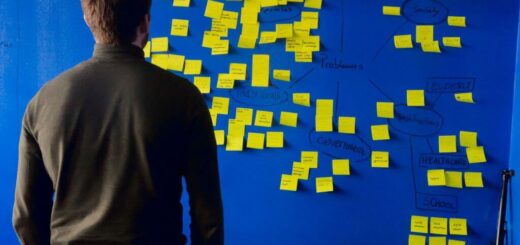Launching a New Blog Project – The Basic Considerations
 Before beginning to develop and code a new blog, it is important to be able to answer a range of questions about the target audience, goals, resources, website feasibility, and others. A good blogger must understand that a new blog project requires preliminary steps to be taken before starting the development process.
Before beginning to develop and code a new blog, it is important to be able to answer a range of questions about the target audience, goals, resources, website feasibility, and others. A good blogger must understand that a new blog project requires preliminary steps to be taken before starting the development process.
In this article I review the basic considerations about launching a new blog project. My suggestions will help a blogger to understand what he/she needs to launch and why. I highlight the issues that must be considered prior to the website development phase. I also recommend using this source http://www.ehl.edu/en/study for insight. Thanks.
Here are the basic considerations on how to launch a new blog project:
- Determine your target audience
- Identify the Purpose
- Establish the Goals
- Evaluate the Resources
- Analyze Project Feasibility
- Develop Website Specification
1. Determine your target audience
A target audience is a particular group of people who are the intended recipients or consumers of an advertisement or a product/service. You must determine who will enjoy reading your blog. Those people will be the readers or recipients of your blog posts and publications and will also generate revenue for you.
Answer these questions to determine your target audience:
- Who do you develop your blog for?
- Do you really have something to offer to the target audience?
- What are assumptions (e.g. age, location, interests) you make regarding the target audience?
- What are your expectations regarding traffic to your blog?
- Are you sure that your traffic expectations will hit the target audience?
An example:
You want to launch a new blog project dedicated to business management training. You plan to write articles, provide video lessons and podcasts, publish various guides and best practices, and so on. Your target audience will be students and also entrepreneurs looking for business management online education.
Now you need to make some assumptions regarding the target audience of your blog project, for example:
- Age
- Location by regions, countries, cities
- Interest in pursuing business management education online
- Available time to read your blog
You must be sure that you can create a really interesting resource about online education. Your website should generate traffic that hits the target audience. Be very pragmatic in evaluating your capabilities and remember that the target audience can make or break your project.
2. Identify the Purpose
When you know who your website is targeted to, your next step is to determine the overall purpose of your blog project. The purpose should identify and define the final resource you want to reach through blogging.
You must state the purpose considering your own intentions and desires. You shouldn’t say anything about profit expectations or business value of your future blog. The key point here is to stress out the need for business management training and that your target audience will be interested in your blog.
Here are some considerations about purpose statement:
- Keep your purpose short yet comprehensive, for example: The purpose of my blog is to disseminate valued, up-to-date and relevant information about business management courses and lessons
- Avoid using complicated words and long expressions
- Never get into details about how your blog will help people
3. Establish the Goals
The goals of your blog project should be SMART, or
- Specific
- Measurable
- Achievable
- Relevant
- Time framed
You must state your goals following the SMART technique. Also remember to establish the goals in terms of your business interest. Do not forget to include the target audience in your goal statement.
Here is an example:
- To provide students and entrepreneurs with an online lessons about business management
- To entice the visitors to register for email subscription
- To earn 1,000 USD monthly from affiliated education courses available on the website
4. Evaluate the Resources
Great, you defined your target audience and established the purpose and SMART goals, but what about the resources necessary for launching your blog project?
The resources are the driving force that allows your website to exist and develop. You must evaluate your resources and then check whether they are sufficient for doing your project.
Here’s a list of basic considerations about the resources:
- Budget, or the amount of money you need to finance your blogging initiative
- Manpower, or all those professionals who will code, design, launch, and administer your website
- SEO, or those options you must use to promote the blog on the Web
- Time, or the hours, days, weeks and months you are ready to sacrifice to your blog project
- Skills and knowledge, which are required of you to launch your website
5. Analyze Project Feasibility
Feasibility study will help you determine whether your blog project is worth the resources to be invested. It is a kind of assessment that tells you whether or not the minimum benefit from the blog will compensate the initially invested resources.
In project management, feasibility analysis is used as the major way to determine and justify a project’s economic, technical and financial reasonability. A feasible project will generate minimum expected revenue and be aligned with existing priorities and objectives.
I suggest you follow these considerations when determining the feasibility of your blog project:
- Assess the technical capability for website design and coding
- Identify the revenue you expect to gain from blogging
- Estimate the time (payback period) required for you to launch the blog and get the expected revenue
- Analyze and calculate the blog expenses
- Measure website ROI through the formula: [(Payback – Expenses) / Expenses)]x100
6. Develop Website Specification
Creating a detailed specification for your website will help you gain insight into what exactly you wish to receive. You must involve professional website developers, designers, and quality engineers who will create a blog project specification for you.
Here are my suggestions for you regarding the key component of website specification:
- CMS (Content Management System)
- Blog design and layout
- Navigation and menus
- Main pages and sections, including but not limited to About, Privacy Policy, Terms of Use
- Modules and features, including but not limited to Subscription Form and Contact Form
- User interaction tools, including but not limited Comment Form, Polling Tools, Forum
Also do not forget to include in your specification all the users (and their rights) who will access the website and edit its content. They might be authors, editors, administrators, developers, etc. You can omit this section in your blog project specification if you are the only person who will take care of your website.














